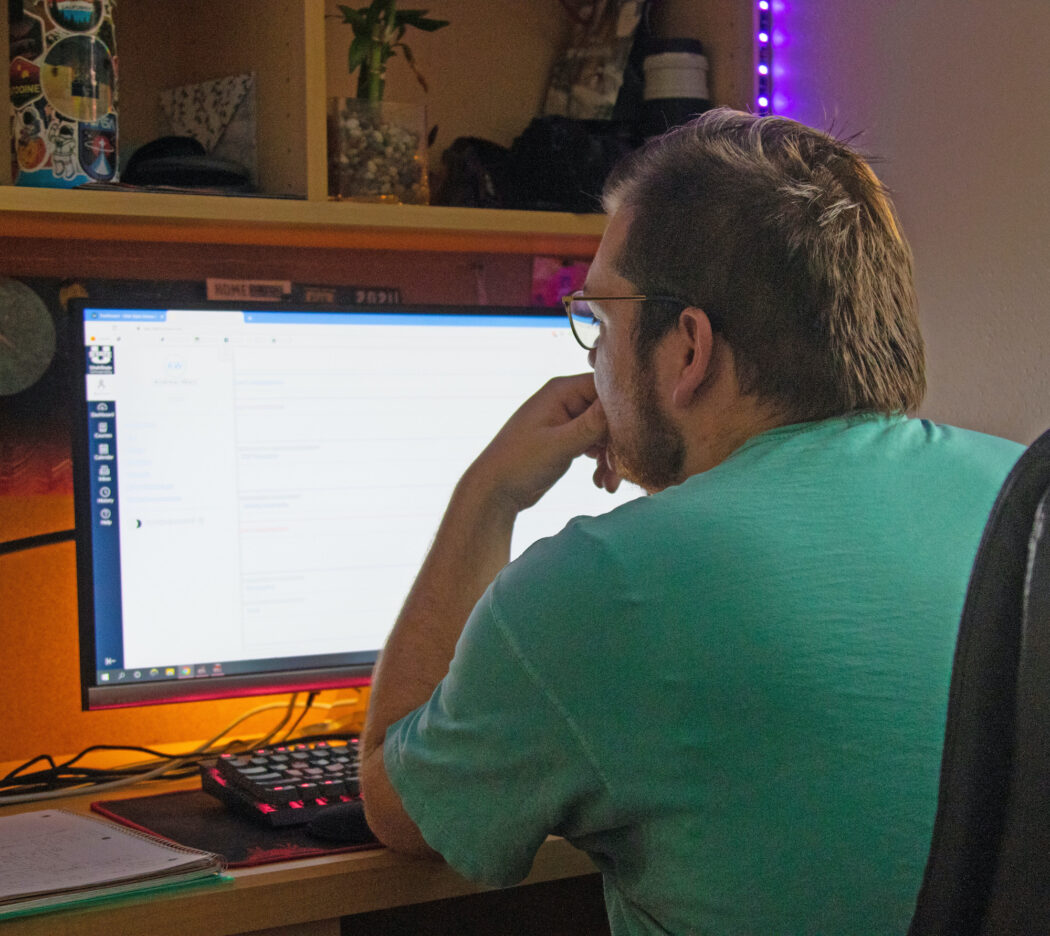Distance learning and its effect on students
At Utah State University, 150,000 students have taken one of 500 online courses since USU created its first online class 25 years ago.
A U.S. News and World report also voted USU as Utah’s best online university in 2021, showing how USU’s online programs continue to grow and provide high-quality education.
Ever since many classes went online in March 2020, distance learning has become an increasingly-present situation USU students have to consider when planning their education.
Even as classes are meeting in person again, broadcast lectures and asynchronous assignments became commonplace for not only Aggies, but nearly every student across the U.S.
According to an article written by Dee Patel for Penn Today, researchers have found online learning during the pandemic hurt students’ learning unless the teacher used active learning techniques, in which cases the students’ had improved learning outcomes.
USU professors were required to quickly adapt their teaching styles and course material to fit the online classes’ structure introduced by the pandemic.
Shane Graham, who has been a professor at USU for more than 15 years, was on a sabbatical during the outbreak. He taught his first hybrid online class in March 2021.
“I could never be in one place,” Graham said. “I had to be looking at the chat to see if I had a comment. I had to keep an eye out for someone on Zoom. I always felt like I was being pulled in different directions. It was difficult. It was a real challenge.”
Although Graham was nervous about the first patch of his online students’ papers, he was surprised to find that the grade distribution of their papers wasn’t too different from his previous in-person classes.
He went on to applaud his students for their motivation even through virtual learning.
“I’ve been impressed with the resilience of my students. I think a lot of them are struggling with anxiety and depression, but they’re persevering and turning in good work,” Graham said. “I’ve been pleasantly surprised.”
And although it may be a struggle for some, there are students who enjoy online classes.
Todd Newbold, a USU student enrolled in both online and in-person classes, said online classes make scheduling easier for students.
“You can do classes whenever your schedule allows you. So, if you work, you can plan around that, which is very convenient because you can do it whenever you want,” Newbold said.
He also said pace is another factor to his virtual success. If a class is easier then it’s always an option to work ahead and focus on harder classes.
However, Newbold said online learning can be less effective for some students.
“You learn a little bit more material maybe when you’re in class versus online. But I don’t see my grades change from being in person versus online,” he said. “I think it’s different for each person.”
Currently, classes at USU vary in format.
Some classes meet exclusively in classrooms on campus while others stick to online video chats. The university has left the decision up to each professor.
Students who do meet on campus are encouraged to wear masks while indoors, sanitize their hands often and maintain social distancing so students can continue to meet in the classroom.
Additionally, most classes provide online conferencing options for students who don’t feel well and can’t attend class to help keep all students healthy.
Depending on the course and the students’ needs, some classes also have options for students to attend via video conferencing even if they aren’t sick if they’d be more comfortable learning from home.
-Ryker.Eggenberger@usu.edu


In person classes are pointless for many courses, especially the lower to mid level ones, and online versions of those classes are much better suited for those courses due to better more frequent feedback loops.
In classes with 30, 40, 70+ students how many actually get an extra “benefit” from being in-person? The one or two that actually get to ask a question during class? Maybe the other one or two that get a brief moment to ask a question before/after class? It’s certainly not many.
Video lectures as minimum allow students to speed up, slow down, skip around and review material at their own pace.
Some “hands on” classes understandly may be more difficult, if not impossible, to do remotely. However, even in this area there are many options available these days. i.e. Johnson & Johnson using virtual reality (VR) to teach surgical procedures https://business.oculus.com/case-studies/johnson-and-johnson/ alongside the many, many other examples and studies out there on such technologies being used.
It’s like, welcome to the modern century higher education! Then again, in-person probably makes the school more money due to gatekeeping, because digital goods inherently have no real monetary value after their initial development costs are covered (in other words, digital goods can be reproduced near infinitely for basically free, but that’s another topic for another time).
It’s “effect” not “affect”.